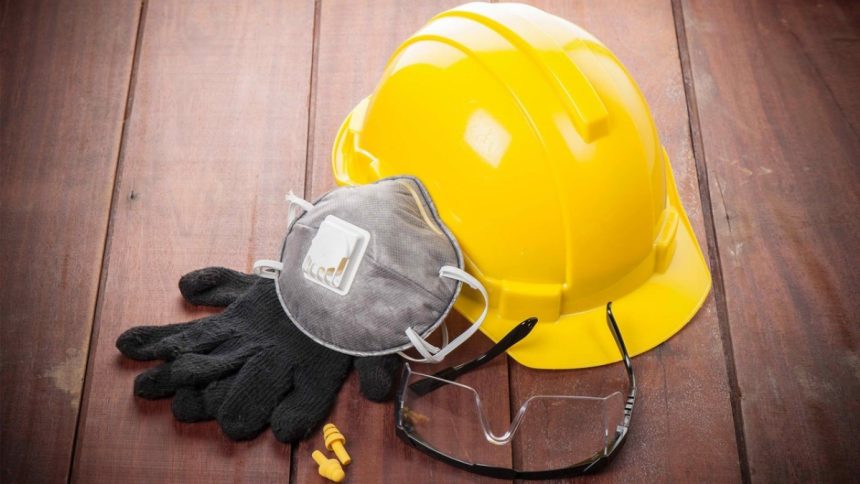Dropped objects pose a significant threat in various work environments, particularly in construction and maintenance settings. According to safety reports, nearly 30% of injuries in the construction industry stem from falling objects.
In this blog, we will discuss five practical strategies to help safeguard your team from dropped object dangers. By implementing these strategies, you can create a safer work environment that promotes productivity and employee well-being.
1. Conduct Regular Risk Assessments
Identify Potential Hazards
One of the first steps in preventing dropped object incidents is conducting regular risk assessments. This involves evaluating your worksite to identify areas where objects may fall. Common locations include elevated platforms, scaffolding, and even around machinery where tools are frequently used.
To perform a thorough risk assessment, walk through the worksite and make a list of potential hazards. Pay close attention to places where tools and materials are stored or used at height.
Involve Employees in Assessments
Engaging your employees in the risk assessment process is crucial. They are often the ones who work directly in these environments and can provide valuable insights into potential hazards. Encourage team members to voice their concerns and share experiences related to dropped objects.
By involving employees in the assessment, you foster a culture of safety and awareness, empowering them to take ownership of their workplace environment.
2. Implement Tool Tethering Systems
One effective way to prevent dropped object incidents is by implementing tool tethering systems. Tool tethers are safety devices that secure tools and equipment, preventing them from falling when not in use. They can significantly reduce the risk of injuries caused by falling tools.
Selection and Installation
When choosing tethers, consider the type of tools used on your worksite. Each tool may require a different type of tether, depending on its weight and usage. It is essential to select high-quality tethers that are appropriate for the tools being secured.
Installation is equally important. Ensure that tethers are attached correctly to both the tools and secure points in the work environment. Providing proper training on how to use tethers can further enhance their effectiveness in preventing dropped objects.
3. Provide Comprehensive Training
Safety Training Programs
Comprehensive training is a cornerstone of any effective safety program. Regular safety training on dropped object prevention can educate employees about the risks associated with their tasks. Topics to cover should include proper tool handling, securing equipment, and the importance of maintaining a clean work environment.
Continuous Learning and Refresher Courses
Safety is not a one-time lesson. To keep safety at the forefront, consider implementing ongoing training and refresher courses. Regular discussions about safety experiences and lessons learned can reinforce the importance of being vigilant about dropped object hazards.
By promoting a culture of continuous learning, you encourage your team to remain aware of safety practices and to adapt to any changes in their work environment.
4. Maintain a Clean and Organized Work Environment
Importance of Workplace Organization
A clean and organized work environment plays a vital role in preventing dropped objects. Clutter can lead to confusion and accidents, increasing the likelihood of items falling or being misplaced.
Encourage your team to keep work areas tidy and to store tools and materials properly. This simple practice can make a significant difference in reducing dropped object incidents.
Establishing Clear Storage Protocols
In addition to maintaining cleanliness, establishing clear storage protocols is essential. Designate specific storage areas for tools and materials, and ensure that everything has its place.
Clearly labeled storage spaces can help workers find what they need quickly while reducing the chances of items being left out or improperly stored. This organization minimizes the risk of objects falling and keeps the worksite safe.
5. Utilize Safety Equipment and Barriers
Types of Safety Equipment
Incorporating safety equipment and barriers into your work environment can provide an additional layer of protection against dropped objects. Safety nets, guardrails, and toe boards can prevent falling items from injuring workers below.
These measures are particularly crucial in high-risk areas where tools and materials are frequently used at height.
Installation and Maintenance
Proper installation and regular maintenance of safety equipment are critical to their effectiveness. Ensure that safety barriers are correctly fitted and positioned in areas where objects may fall.
Regular inspections of safety equipment can identify any wear and tear, allowing for timely repairs or replacements. Maintaining your safety equipment is essential for ensuring its reliability and protecting your workers.
Common Causes of Dropped Objects
Understanding the common causes of dropped objects is essential for implementing effective prevention strategies. Various factors contribute to these incidents, and identifying them can help create a safer work environment. Here are some of the most frequent causes:
1. Inadequate Tool Maintenance
Tools that are not properly maintained can malfunction or become dislodged during use. Regular inspections and maintenance of tools are crucial to ensuring their safe operation. For instance, if a tool’s securing mechanism is faulty or if it is worn out, it may accidentally fall during use.
2. Improper Tool Handling
Workers may inadvertently drop tools due to improper handling techniques. For example, reaching over a railing or attempting to carry multiple tools at once can lead to losing grip and dropping them. Training workers on correct lifting and handling techniques can help mitigate this risk.
3. Overloaded Equipment
When tools or materials exceed their intended load limits, it increases the likelihood of accidents. Overloaded platforms or scaffolding can collapse, causing items to fall. Ensuring that all equipment is used within its specified load limits is vital for preventing dropped objects.
4. Poorly Secured Tools and Materials
Failure to secure tools and materials when not in use is a leading cause of dropped objects. Workers often neglect to use tethers or storage devices, increasing the risk of items falling. Providing tethers and emphasizing their importance can reduce this risk significantly.
5. Distractions and Lack of Focus
Distractions on the job can lead to mistakes and accidents. When workers are distracted, they may not pay full attention to their tasks, resulting in dropped tools or materials. Encouraging a focused work environment and minimizing distractions can enhance safety.
Encouraging a culture of safety and awareness among your employees is crucial for long-term success. Take the time to assess your workplace for dropped object risks and implement these strategies to create a safer environment for everyone. Remember, a proactive approach to safety not only protects your workers but also enhances morale and productivity on the job.
Lynn Martelli is an editor at Readability. She received her MFA in Creative Writing from Antioch University and has worked as an editor for over 10 years. Lynn has edited a wide variety of books, including fiction, non-fiction, memoirs, and more. In her free time, Lynn enjoys reading, writing, and spending time with her family and friends.















